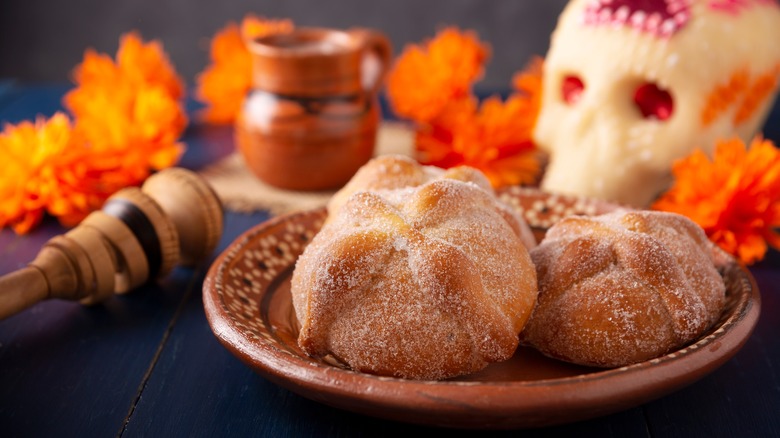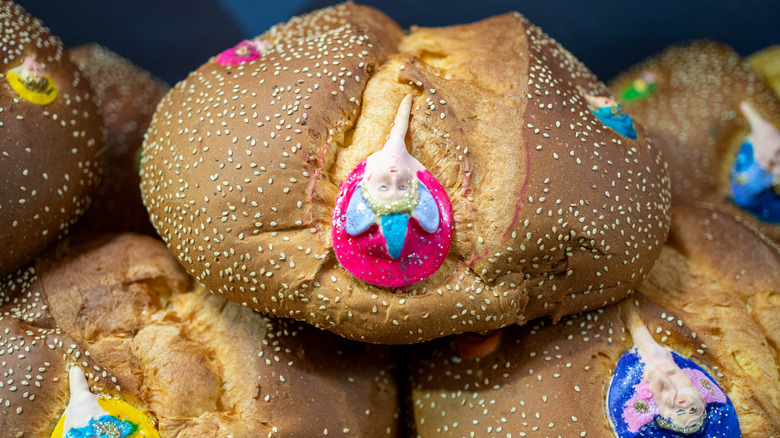How Pan De Muerto Became An Integral Part Of Día De Los Muertos
With a history dating back thousands of years, Día de los Muertos, or Day of the Dead, is celebrated annually from October 31 until November 2 in Mexico, and by those of Mexican heritage across the globe. Commemorating the lives of ancestors, the holiday involves parades, fancy dress costumes, singing, dancing, and food offerings to lost loved ones laid out on their graves, or on ofrendas (altars) which are intended to welcome the dead home.
One such offering is pan de muerto or bread of the dead. The sweet, soft bread is made from flour, eggs, milk, butter, sugar, and yeast, and sometimes with fragrant anise seeds and orange blossom. It is often decorated with symbolic bones or skulls made from dough and formed in a circle to represent the circle of life.
Pan de muerto is a key part of Día de los Muertos, which is about reuniting the souls of those deceased with the living, and which was officially recognized by UNESCO in 2008 as part of the representative list of the Intangible Cultural Heritage of Humanity. Rooted in the ancient Aztec tradition of placing food offerings on tombs, the bread itself has a long history, dating back to the early 1500s. A Medieval Spanish tradition saw people bringing pan de ánimas (spirit bread) to graves on All Souls Day, and it is thought that the bread's signature sweetness comes from the sugar the Spanish brought to Mesoamerica. Like Mexico itself, pan de muerto is a blending of traditions from multiple cultures, culminating in a modern practice that is both beautiful and profound.
Mexican bakeries make hundreds of types of pan de muerto
Just as there are many regional differences concerning breads around the world, there is not just one type of pan de muerto. In fact, bakeries across Mexico prepare more than 400 types of pan de muerto during Día de los Muertos — although it is thought that there could be hundreds more varieties, with different shapes including animals, people, angels, and more.
The typical round shape, known as hojaldras, is commonly found in the states of Mexico, Aguascalientes, Chihuahua, and Jalisco. In Mixquic, Mexico City, you might find despeinadas (translating as 'unkempt ones') decorated with sesame seeds — while in Oaxaca, egg yolk-based pan de yema bread is decorated with small faces or caritas. Sometimes, the breads are topped with pink or red sugar, and sometimes are adorned with a teardrop.
Many bakeries in Mexico only make the pan de muerto especially for the Day of the Dead period while others across the world make it all year round, such is its popularity. Whether eaten by families or believed to nourish the deceased for their Día de los Muertos journey, however the traditional bread is enjoyed, it shows that life is sweet.


